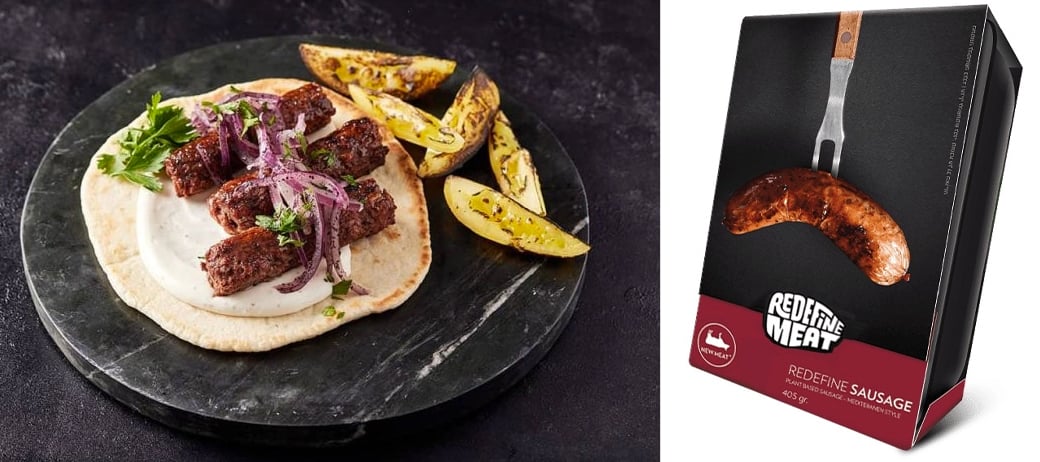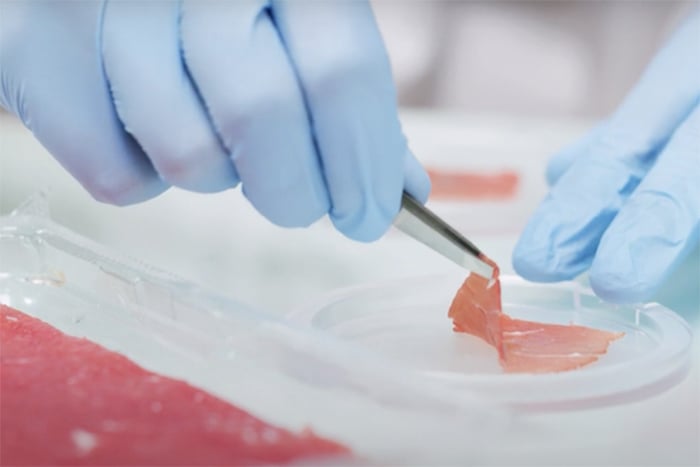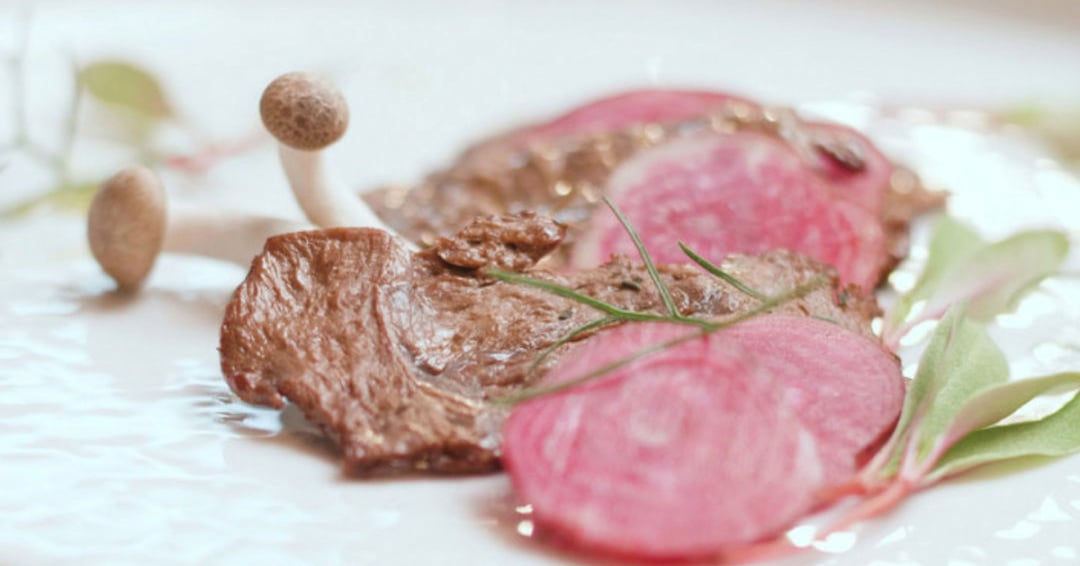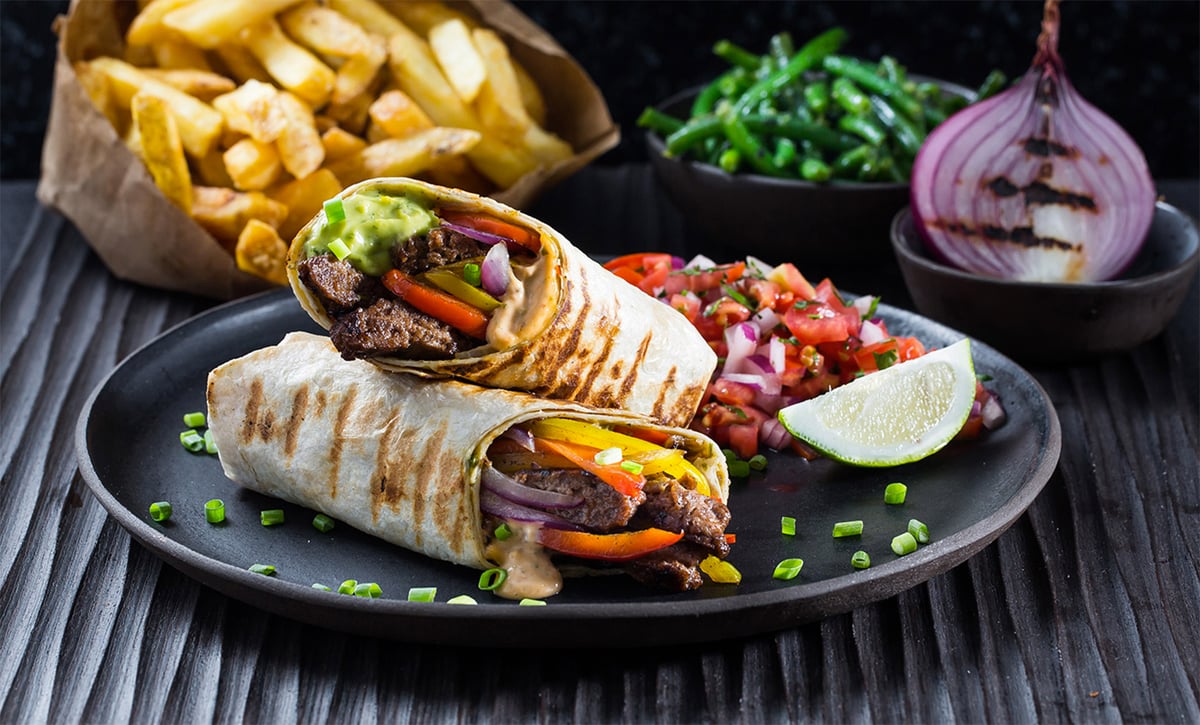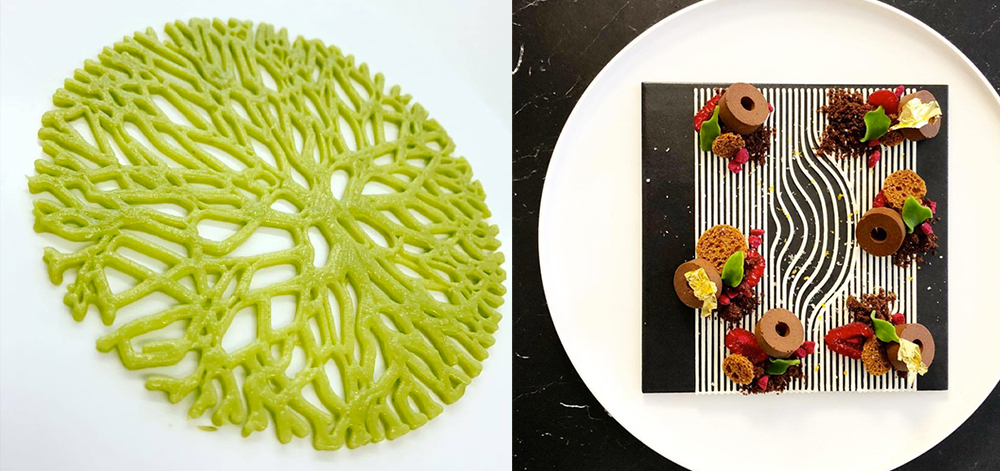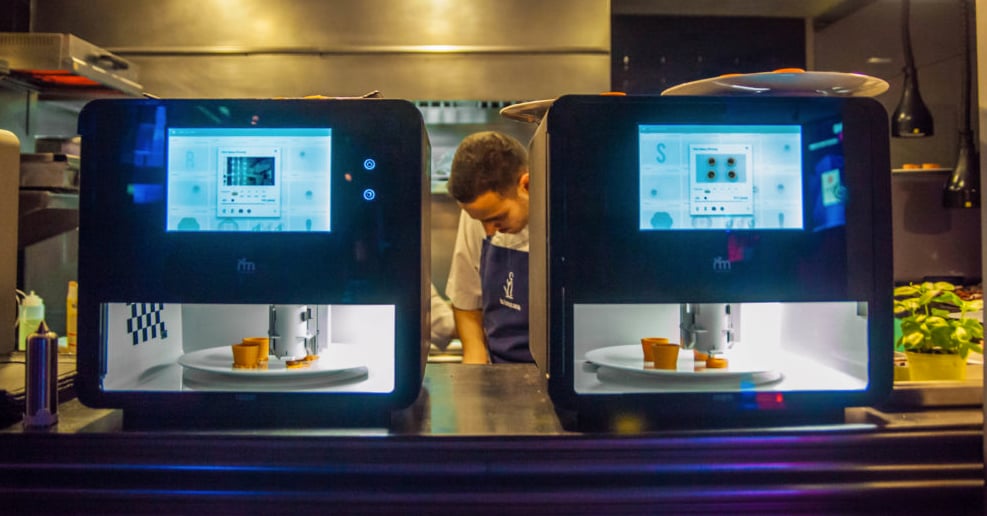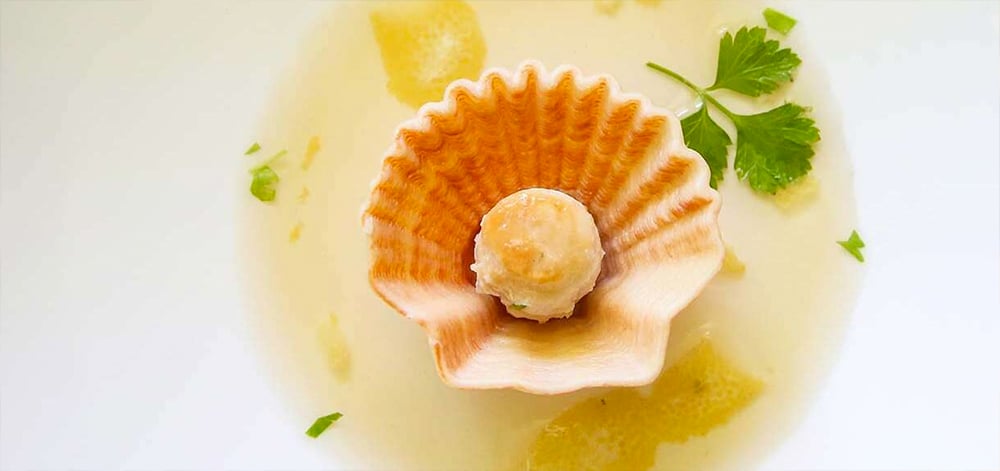Truly appetizing meat alternatives, gorgeous sugar creations, and sculptural chocolates are attracting consumers and investors to the top companies in 3D printed food today, not the fact that these products are 3D printed.
In fact, 3D printing is just another type of extrusion – and you’ve been eating extruded foods for decades, think Cheetos, Goldfish, and hotdogs. So it’s no wonder that 3D printed food companies, especially in the meat alternative sector, are flourishing.
With the explosion of companies and startups in 3D printed food, chances are high that meat and other extruded foods will become major players in the grocery market in the near future.

The advantages of 3D printing food include cutting costs by using exact amounts of ingredients, creating realistic meat alternatives and appealing lab-grown meat, replacing slow manual processes like cake decorating, and bring awe-inspiring creativity to commercial kitchens and restaurants.
Using edible ingredients in the form of purees or pastes, a 3D printer pushes materials through a precisely moving nozzle to build a meal according to the desired design, one layer at a time.
Though still overcoming hurdles of slow printing times and picky eaters, the $485.5 million industry of 3D printing food is projected to reach $1 billion globally by 2025. Whether selling 3D printed food or the printers themselves, these are the top companies in 3D printing food for the next generation of meals.
Why is 3D Printed Food Hot?

Whether it’s to address health issue, the environment, food waste, or the growing demand for meat alternatives, there’s been a scramble of new startups in 3D printing food in the past few years attracting multi-million dollar backing and rave reviews in the press.
Barcelona company Novameat, for example, created the a 3D printed plant-based beefsteak, garnering praise as one of the most realistic alternative meats thanks to founder Giuseppe Scionti’s expertise in bioengineering and tissue regeneration.
Vienna-based Revo Foods raised $1.5 million for market entry with their plant-based pea protein and citrus fiber seafood alternative Salmon With Attitude, aiming to combat overfishing and decrease the consumption of toxic waste materials that often turn up in seafood like mercury and PCBs.
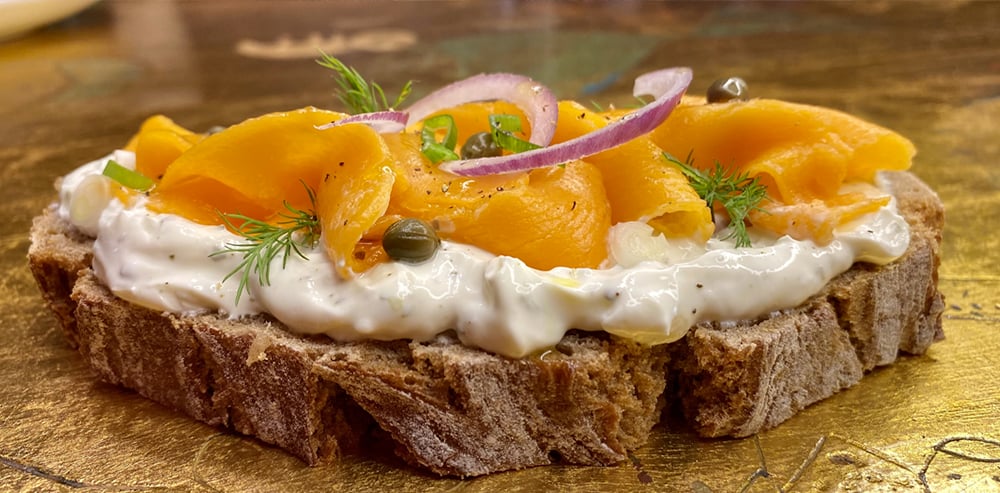
Kickstarter darling Cakewalk smashed its fundraising goal of €10,000 for 3D printing software and hardware attachment to add to existing home 3D printers, raising a total of €26,980 from backers who will receive a food-safe extruder, silicone baking mat, proprietary ingredients, and detailed instructions.
Upprinting Food in Amsterdam is fighting food waste by turning rejected or unused ingredients into 3D printable purees that they then extrude into desirable shapes, dehydrate for crunch and extended shelf life, and sell to high-end restaurants, with whom they partner to take advantage of residual food flows and develop new recipes.
These are just some of the companies making headlines with their 3D printed food, let’s look at more top players in this growing segment.
Redefine Meat
Coming to European consumers within the next few months, 3D printed vegan meat alternatives from another Israeli company Redefine Meat include burgers, kababs, and sausages in attractive packaging.
Rather than culturing animal cells, Redefine Meat is producing fully plant-based “beef” products that are 3D printed at 10kg an hour.
Their first plant-based steak was printed in 2018, and their tests were so successful that they quickly grew from a 10-employee seed startup in 2019 to a full-fledged enterprise of 80 employees in 2021.
At a food truck blind taste test held in 2020, over 90% of the meat-eating tasters agreed that the flavor and texture were a success. Working with Swiss multinational flavor and fragrance manufacturer Givaudan, the company offers ground beef, sausage, burger patties, Mediterranean-style kebabs, and Middle Eastern-style “cigars” of meat rolled in flaky pastry-style crusts.
MeaTech
Israel-based startups are currently dominating the market in 3D printed meat products both animal- and plant-based, with MeaTech as one of the most interesting.
MeaTech is developing technology for printing real meat – they call clean meat – without the need for slaughterhouses. Their process involves harvesting animal fat and muscle cells and separating them into bio-inks, which are then loaded into a 3D bioprinter that assembles cells into formations that mimic organically grown muscle cuts.
These 3D prints are then incubated to allow the cells time to grow and mature into structured chicken and beef tissue, all without butchering any livestock. The company touts that their methods will drastically impact the negative repercussions of the meat industry by reducing the number of animals raised for slaughter and their accompanying methane emissions, water use, soil pollution, deforestation to produce grazing land.
3D printed meat cuts can be customized with the 3D printers, including more fat marbling for enhanced flavor, fortifying with extra nutrients, or lowering cholesterol and fat for dietary health, all while maintaining a consistency of quality with digital renders of steaks, the company says. Another benefit is the cleanliness of a clinical lab environment for growing cultured meats means, which lowers risks of salmonella and E. coli contamination, as well as eliminating the need for pesticides, hormones, and antibiotics.
Even though the company went public in March 2021, 3D printed juicy steaks from MeaTech are still a ways off. So far the company has only been able to 3D print a thin layer of meat, but a new factory plan announced in July 2021 could change that. MeaTech announced an agreement to partner with one of Israel’s largest supermarket chains to expand its development of cultivated meat products with a local production facility.
Aleph Farms
MeaTech’s main competitor is Israeli startup Aleph Farms, which is also using 3D bioprinting and live cultures of animal cells to grow rib-eye steaks in labs over the course of 3-4 weeks.
They were the first in the world to create lab-grown steaks from cow cells in 2018, and in 2019, they partnered with 3D Bioprinting Solutions to produce the first ever meat cultivated in space, aiming to feed astronauts on the International Space Station fresh food to boost both nutrition and morale. Their last round of investments topped $105 million, allowing for global expansion and research of cultivating new types of animal proteins beyond beef.
Just like MeaTech, you won’t find their cultivated meat products on the grocery shelves or menus anytime soon. The company hopes for an initial market launch in 2022 and is currently is working with regulatory agencies on its plans for market entry.
SavorEat
A fourth company to watch in Israel offers a food 3D printer itself to consumers, rather than food.
SavorEat’s lovingly titled “chef robot” 3D prints and cooks plant-based burger patties with infrared light, and the proprietary 3D printing technology has patents pending in the US, EU, and Australia.
Aimed at restaurants, hotels, airlines, cruise ships, military bases, and convenience stores, the robot can 3D print up to three meals at a time in five minutes, using non-GMO plant-based ingredients with customizable options for increased protein, lower fat, and lighter consistency than the standard printed burger.
Having raised about $13 million in funding and valued at $51.2 million on Tel Aviv Stock Exchange, the company is now working towards meatless steaks, kebabs, and seafood.
BeeHex
US startup BeeHex started as a NASA funded company to explore food production in space but now produces 3D printers to decorate baked goods.
Seeing a keen business opportunity to automate cake decorating, BeeHex now focuses on 3D printers, such as the DecoPod and the smaller Cake Writer that enable grocery customers to 3D print a personalized message on store-bought cakes in minutes. Unlike the company’s first cake printer that was built for high-volume bakeries, the DecoPod has a touch screen kiosk where customers can select a design and personalize the message that’s printed on the top of the cake.
Currently, they are developing personalized nutrition bars printed to order, customizable by flavor, texture, and nutritional values.
byFlow
Helping chefs and home cooks push their creativity to the limits, byFlow 3D printers are easy and fun. Just load your favorite food (in paste version) into the printers cartridge and printer out any shape with meats, meringues, marzipans, chocolates, pastries, fruits, and more.
The company’s flagship Focus 3D printer is a portable platform designed for easy use. The system includes upgradable printheads and software, 10 refillable ingredient cartridges, four nozzles in two sizes, and pre-prepared food designs for immediate use right out of the box.
The proprietary software byFlow Studio includes a custom design suite, a preloaded design collection, and a tech support feature to accompany ongoing software upgrades.
Natural Machines
Barcelona-based Natural Machines, founded in 2012, makes the smart and food-agnostic Foodini 3D printer.
Unlike most 3D printers that require STL files for implementing designs, the Foodini Creator software is compatible with JPEG image files, and connecting the printer and its software to the web allows control from any computer or tablet connected to the same WiFi network.
Dishwasher-safe nozzles with wider necks than the syringes usually used with 3D printers allow for much faster printing, meaning meals can be completed in under a minute. The Foodini doesn’t cook, but it does heat – meat and cookie dough would still need to be cooked after being printed, for example, but chocolate can be kept melted and mashed potatoes can be printed warm. There are no limits to savory or sweet ingredients – consumers can load whatever ingredients they want into the stainless steel capsules that come with the system, so long as their consistency is appropriate for printing. Though the Foodini was developed for use in professional kitchens, the company is currently working on a model for home use.
BluRhapsody
Italian pasta giant Barilla launched BluRhapsody in 2019 to 3D print complex pasta shapes in high quality semolina flour paste that would otherwise be too costly, time-consuming, or difficult to shape by hand or traditional machine.
In addition to fillable shells in the shape of all 26 letters of the alphabet, the company offers custom-printed pasta in any size, shape, color, and flavor for chefs and consumers wanting personalized dining experiences. For discerning home chefs and fine dining establishments, BluRhapsody advertises twelve 3D printed shapes ranging from elegant clam shells and sea urchins to a multi-tier, vase-shaped configuration called Kalpis.
Print2Taste
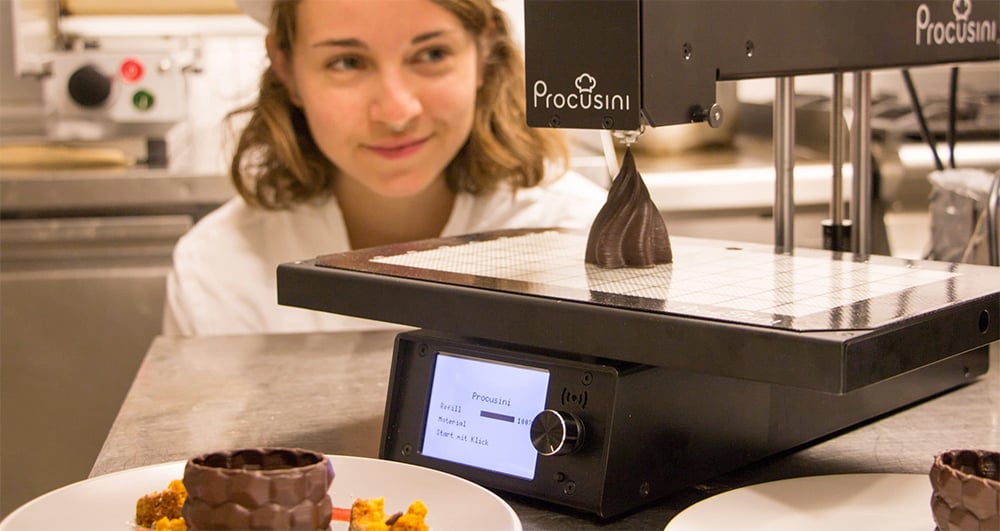
German enterprise Print2Taste dominates the European market with the home-use chocolate 3D printer Mycusini and the multi-ingredient Procusini for professionals.
Home bakers use the Mycusini Club software to draw confectionary designs freehand as well as choose from a huge library of pre-made designs. The printer features chocolate cartridges in blue, pink, white, and dark chocolate for decoration, in addition to praline fillings and chocolate bars.
The Procusini offers professional chefs an even wider range of foods, from pastries and sweets decoration to savory foods like mashed potatoes, butter, and even mayo and wasabi. The latest model, the Procusini 5.0, has a newly integrated display that makes operation even easier than previous models, and the whole unit weighs just under 9 kg. Like the Mycusini, the Procusini Club software provides access to a 3D template library, freehand drawing, and regular upgrades. Professionals can purchase the Procusini in 16 countries across the EU and Asia, and the Mycusini ships worldwide except for the U.S., the U.K., Canada, and Iran.
REM3DY Health
U.K.-based REM3DY Health is leading the way in personalized, 3D printed nutrition with Nourished, a made-to-order vitamin gummy.
A vegan base is printed with seven layers of nutrients determined by the company’s online quiz, which ensures products are individually tailored to each consumer and avoid ingredients interacting negatively with each other. The company raised $11 million in funding for a growth push in 2021, and its total value now stands at $71.6 million. Though they started with adult vitamins, launched an offering for children’s nutrition, and are not working on protein bars, and pet nutrition.
Lead image source: 3D printed burgers from SavorEat.
License: The text of "The Top 10 Companies in 3D Printed Food" by All3DP Pro is licensed under a Creative Commons Attribution 4.0 International License.
